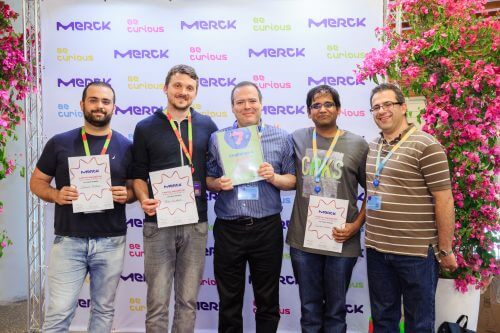Technology for accurate counting of bacterial colonies, by combining images at different lighting angles, won the Merck hackathon in Israel

A team of students from the Weizmann Institute and Tel Aviv University, which presented technology for the accurate counting of bacterial colonies, which enables, among other things, the optimization of laboratory work and tests to prevent food contamination, won first place in the global Merck hackathon competition, which was held for the second time in Tel Aviv.
The algorithm for counting bacterial colonies is based on photographing the same surface under lighting from different angles - and sending the resulting images for processing and analysis in a cloud environment. This analysis is first performed on each image separately - and then while combining the results. To this day, counting bacterial colonies, which is essential in the health, food and other industries, is done manually or by photographing from above, and the accuracy is lacking.
Second place was won by a device that allows viewing the effects of color pigments under different lighting angles - which may be a future tool for the marketing catalog of the pigments that Merck offers to the cosmetics industry, for example. The device is designed to address the difficulty of demonstrating material effects such as shine, pearl effect, and more in a digital catalog and in photos. The device builds a three-dimensional model of a color object by taking a series of photos that combine lighting from different angles. The unique "lighting box" makes it possible to examine a pigment surface, upload the resulting image to a photo library - and offer customers to use this library when developing products that incorporate Merck raw materials.
Third place was won by a team that developed an application for Amazon's personal assistant Alexa, designed to be operated next to the patient's bed in the hospital - and manages the entirety of the patient's medical data. The purpose of the application is to reduce cases of injury and death as a result of mistakes by the medical staff.
The list of technological challenges presented to the competing students, who came from all the leading academic institutions in Israel, also included the possibility of developing an automatic machine to monitor the storage and use of chemical substances produced by Merck, which would monitor the usage patterns of the company's customers in these substances and optimize their supply chain management processes. As part of another challenge, the contestants were asked to propose a smartphone-only system that would improve patients' persistence in medical treatment and taking medication in an orderly and consistent manner.
Merck's hackathon event was held in Israel for the second year. The event was produced and managed by representatives of all of Merck's activity sectors: health and pharmaceuticals, life sciences and advanced materials. The hackathon is part of a series of Merck programs designed to promote innovation and collaborations with academia and entrepreneurship, which include the activity of the technology incubator in Yavne, and the company's growing innovation center in Darmstadt, Germany.

One response
A great way for a huge corporation to get free innovative ideas from the best minds in Israel.
(rant)